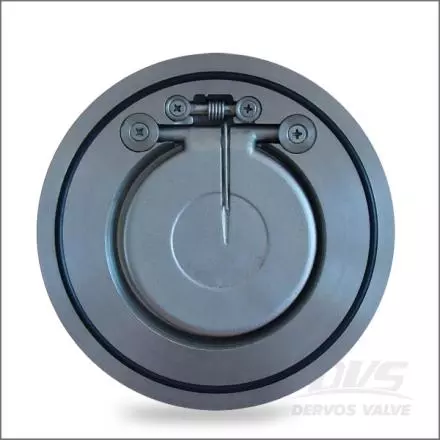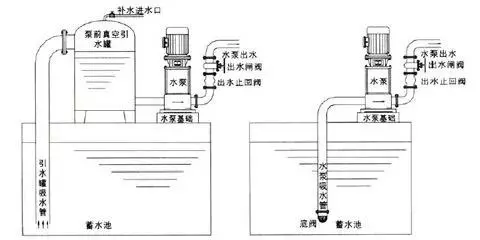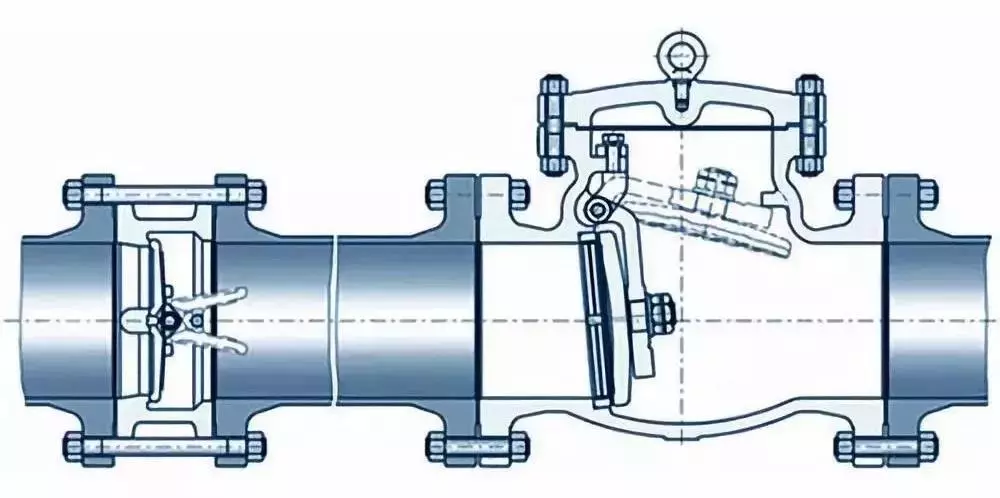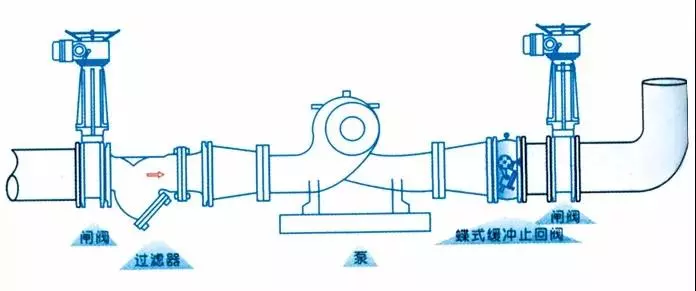The installation position of a forged steel check valve
A forged steel check valve, also known as a non-return valve, is an automatic valve that relies on the pressure of the flowing medium in the pipe to push the valve flap to close and open. When the medium stops flowing, the forged steel check valve flap closes. It can effectively prevent the backflow of the medium in the pipeline, which plays a big role in ensuring the safety of the pipeline.

Forged steel check valves can be divided into three types according to the structure: forged steel lift type check valve (vertical and straight-through types), forged steel swing type check valve (single-disc, double-disc and multi-disc) and forged steel butterfly check valve (single-disc, double-disc). The connection of the above-mentioned several kinds of forged steel check valves can be categorized into four types: threaded connection, flanged connection, welded and wafer connection.
The forged steel check valve is installed to ensure the flow of medium inside the pump, thus guaranteeing the normal operation of the pump. The installation position of the forged steel check valve, whether it is installed in front of or back of the pump, can be divided into two situations.
One is installed at the end of the vertical suction pipe of the pump, also called the bottom valve. The purpose is to solve the problem of refilling water every time the water is pumped since the pump can only be idling and do not pump water when there is no water in the suction pipe in front of the pump. This type of pump is installed above the liquid level (negative pressure method).

The other is installed behind the pump. This kind of installation method is that when the liquid level is higher than the water pump, it is convenient to start and stop the water pump without closing the outlet valve of the pump, especially for the main-pipe water pump system to prevent backflow.

The forged steel check valve must be installed in front of the pump outlet and outlet control valve for troubleshooting. The first outlet of normal pumps is a flexible joint (shock absorber), followed by a forged steel check valve, then a block valve (such as butterfly valve, gate valve, globe valve, etc.)

1. Install a gate valve or a butterfly valve behind the forged steel check valve.
Advantages: This can protect the forged steel check valve, especially in the parallel pump. When one pump does not start, its outlet door is closed, and when another pump starts, the gate valve or the butterfly valve will bear the impact force. If the forged steel check valve fails, the valve shielding system can be closed for repair.
Disadvantages: The gate valve or the butterfly valve are unprotected. There has been a case where the valve plate of the butterfly valve was smashed.
2. Install a gate valve or a butterfly valve ahead of the forged steel check valve
Advantages: The butterfly valve or the gate valve can be protected, and the impact force is borne by the forged steel check valve.
Disadvantages: The forged steel check valve is unprotected. It is controlled by pressure difference. If the pressure of the main pipe is high, the pressure of the pump will be high as well. If the flow rate is unstable, then the check valve will be repeatedly open and close, which will affect the service life of the valve. Moreover, if the forged steel check valve is broken, especially in the main-pipe control system, the systems need to be shut down before repairing. Generally speaking, due to the frequent opening and closing action of the forged steel check valve, the internal connecting portion and the sealing member are easily damaged, and in order to prevent shutting down the whole system because of the failure of the forged steel check valve, the check valve is normally installed in front of the gate valve or the butterfly valve.